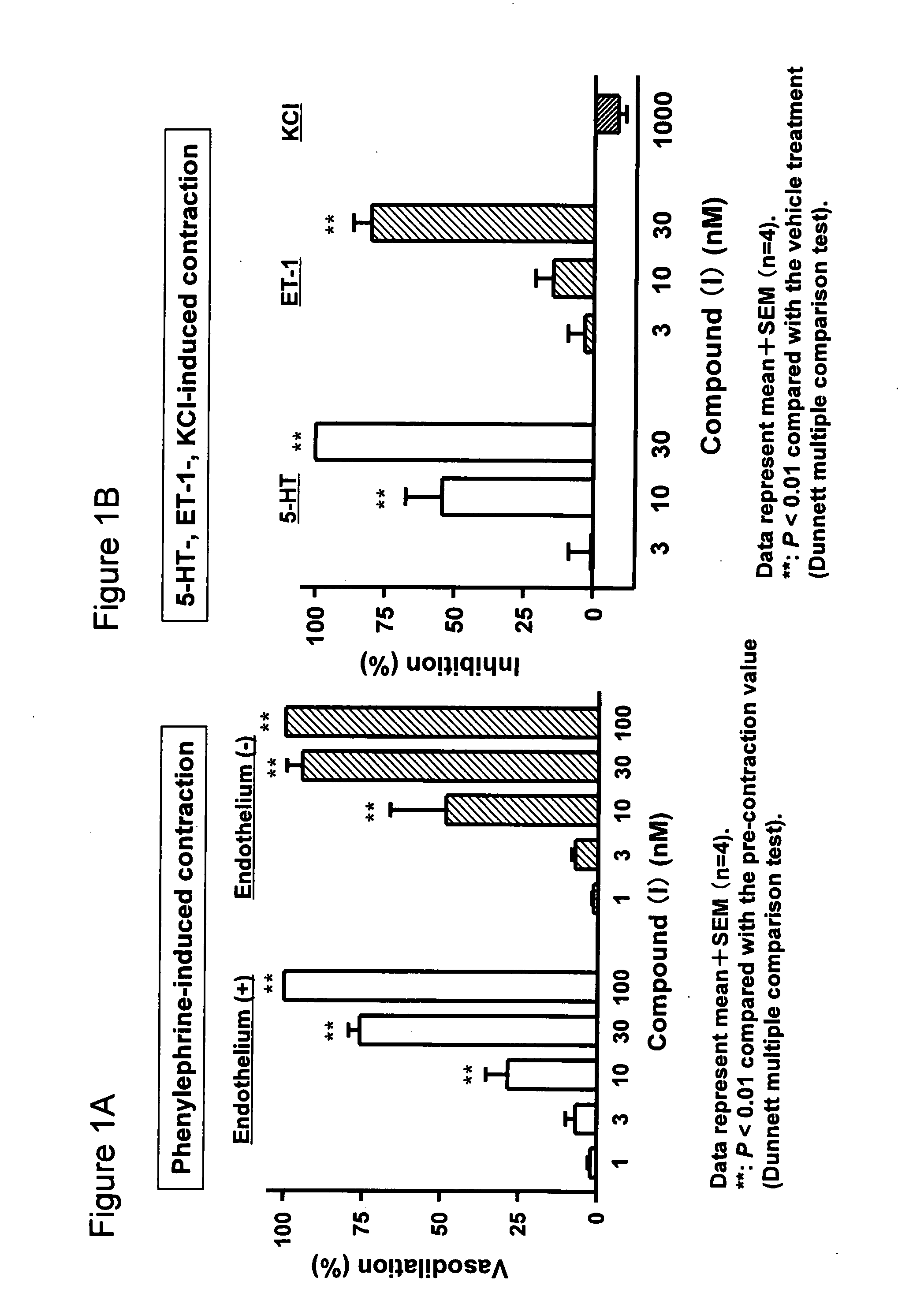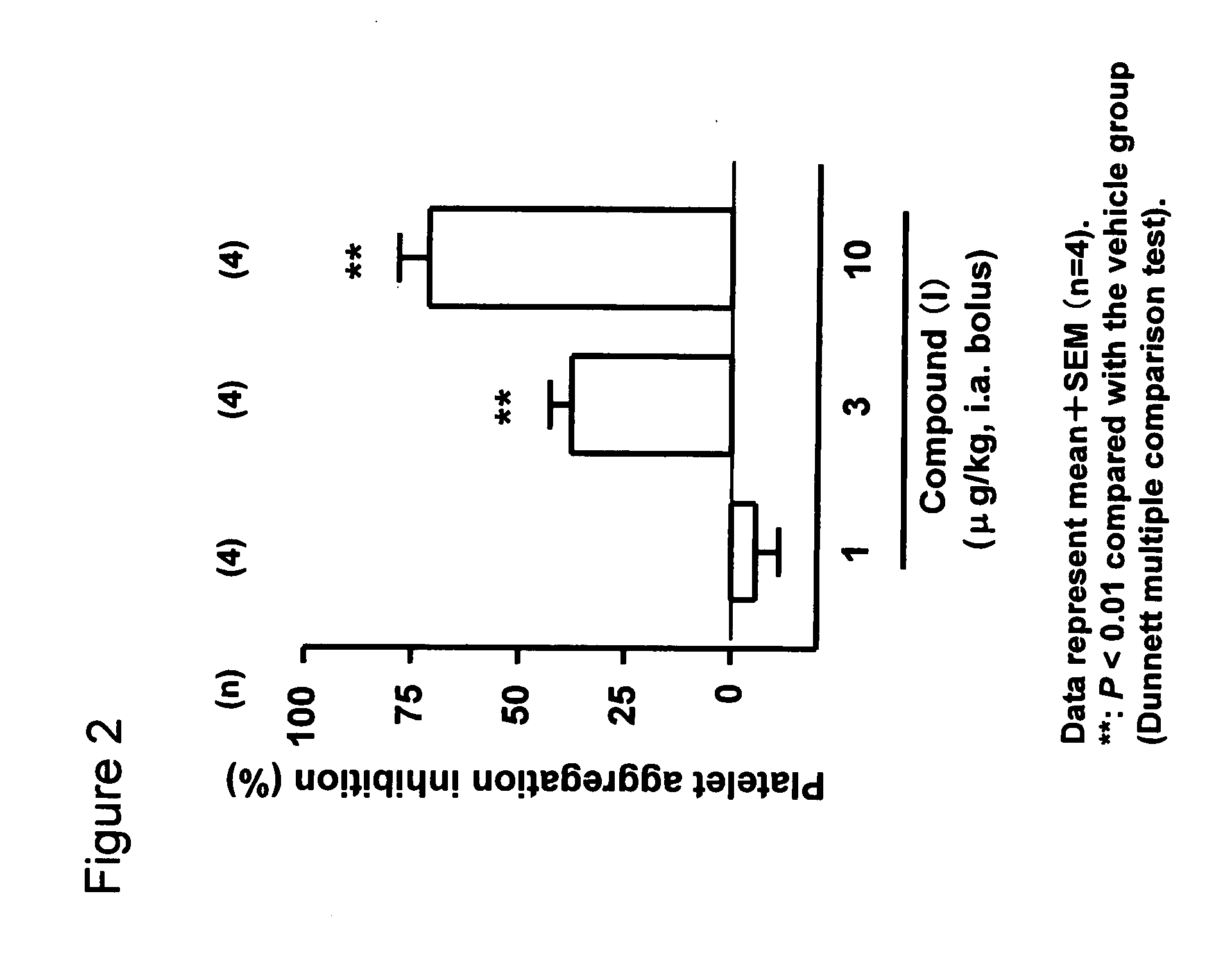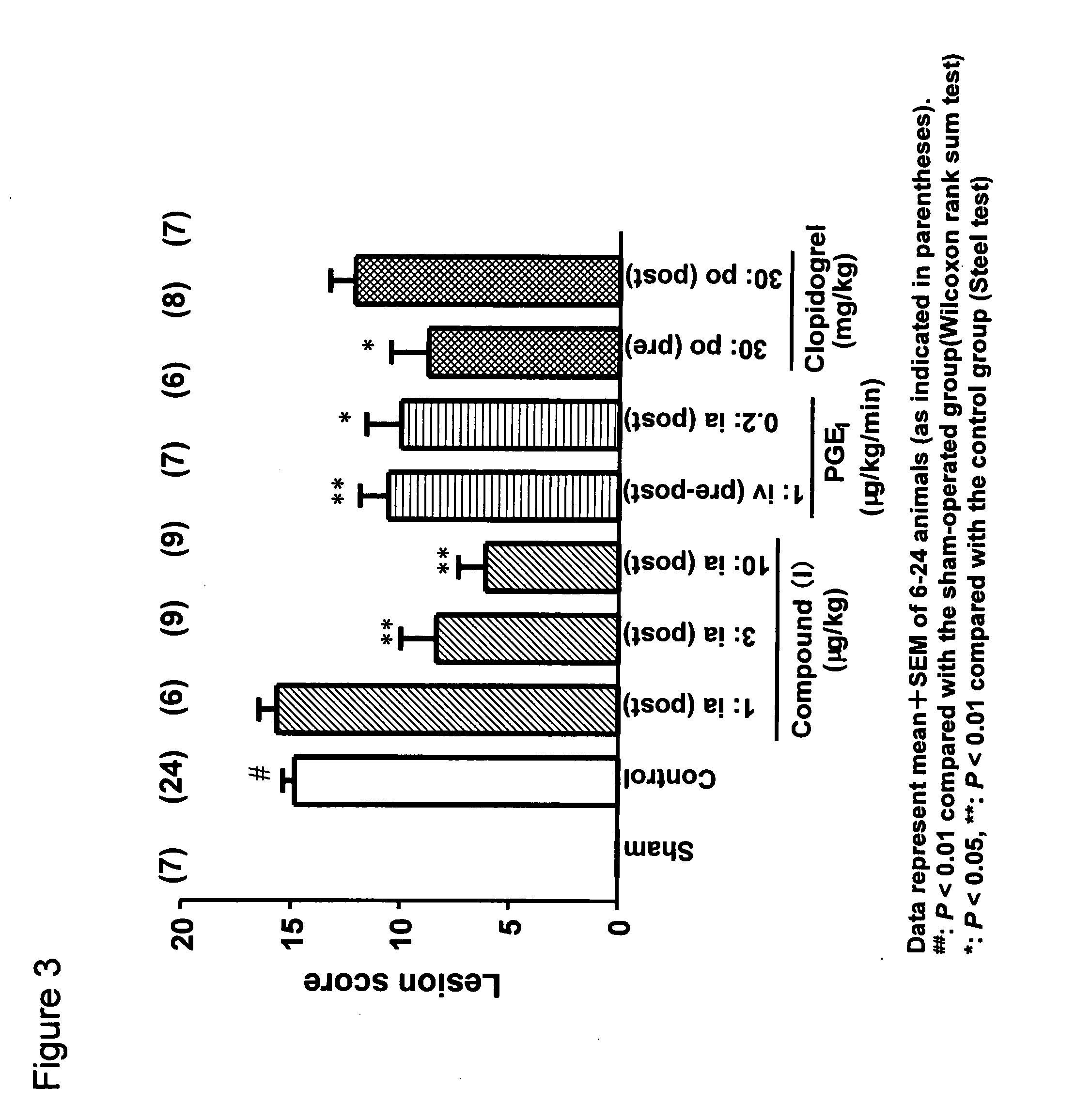Methods for the prevention and/or treatment of peripheral arterial disease
- Summary
- Abstract
- Description
- Claims
- Application Information
AI Technical Summary
Benefits of technology
Problems solved by technology
Method used
Image
Examples
example 1
[0032]Drug Preparation for Intra-Arterial Injection
Material(s) and Method(s)
[0033]The compound (I) was dissolved in 100% ethanol and adjusted to 20 mg / ml. Appropriate concentrations of compound (I) were prepared using saline at final concentrations of 0.5% ethanol.
example 2
[0034]Vasorelaxant Effect of Compound (I) on Vasoconstruction in Isolated Rat Aorta Induced Various Vasoconstruction
Material(s) and Method(s)
[0035]Four male SD rats (Japan CLEA) were used in each group of this experiment. Rats were anesthetized with pentobarbital (60 mg / kg i.p.) and euthanized via exsanguination. The aortas were isolated and all adjacent tissue was removed. Rings of aorta, approximately 2-3 minutes length, were suspended in 10-ml organ baths containing Krebs-Henseleit solution (henceforth referred to as Krebs) of the following composition (mM): NaCl, 112.0; KCl, 4.7; KH2PO4, 1.2; MgSO4, 1.2; CaCl2, 2.5; NaHCO3, 25.0; glucose, 11.0. The Krebs was maintained at 37±1° C. and aerated with a gas mixture of 95% O2:5% CO2 (pH 7.4). Experiments were conducted on aortic tissue of two types. For type 1, the endothelium was removed by gently rubbing the internal surface of the vessel. For type 2, care was taken to maintain the integrity of the endothelium. One ring was placed ...
example 3
[0037]Effect of Compound (I) on Ex Vivo Platelet Aggregation Inhibition After Single Administration in the Rat Femoral Artery
Material(s) and Method(s)
[0038]Four male SD rats (Japan CLEA) were used in each group of this experiment. All animals were fasted overnight before the experiment. After being anesthetized with pentobarbital (60 mg / kg i.p.), vehicle (5% ethanol) or compound (I) was injected into either the left femoral artery or the right jugular vein via a catheter. The rats were anesthetized with pentobarbital (60 mg / kg i.p.) before blood sampling. Blood was collected from the vena cava in syringes containing 3.8% sodium citrate at the following time points: 5 minutes after an intra-arterial (i.a.) single bolus injection of compound (I) (1-10 μg / kg). Platelet-rich plasma was obtained by centrifuging the blood at 200×g for 5 minutes at ambient temperature. This residue was further centrifuged at 2,000×g for 10 minutes in order to obtain platelet-poor plasma. Platelet counts we...
PUM
| Property | Measurement | Unit |
|---|---|---|
| Inhibition | aaaaa | aaaaa |
Abstract
Description
Claims
Application Information
 Login to View More
Login to View More - R&D
- Intellectual Property
- Life Sciences
- Materials
- Tech Scout
- Unparalleled Data Quality
- Higher Quality Content
- 60% Fewer Hallucinations
Browse by: Latest US Patents, China's latest patents, Technical Efficacy Thesaurus, Application Domain, Technology Topic, Popular Technical Reports.
© 2025 PatSnap. All rights reserved.Legal|Privacy policy|Modern Slavery Act Transparency Statement|Sitemap|About US| Contact US: help@patsnap.com



